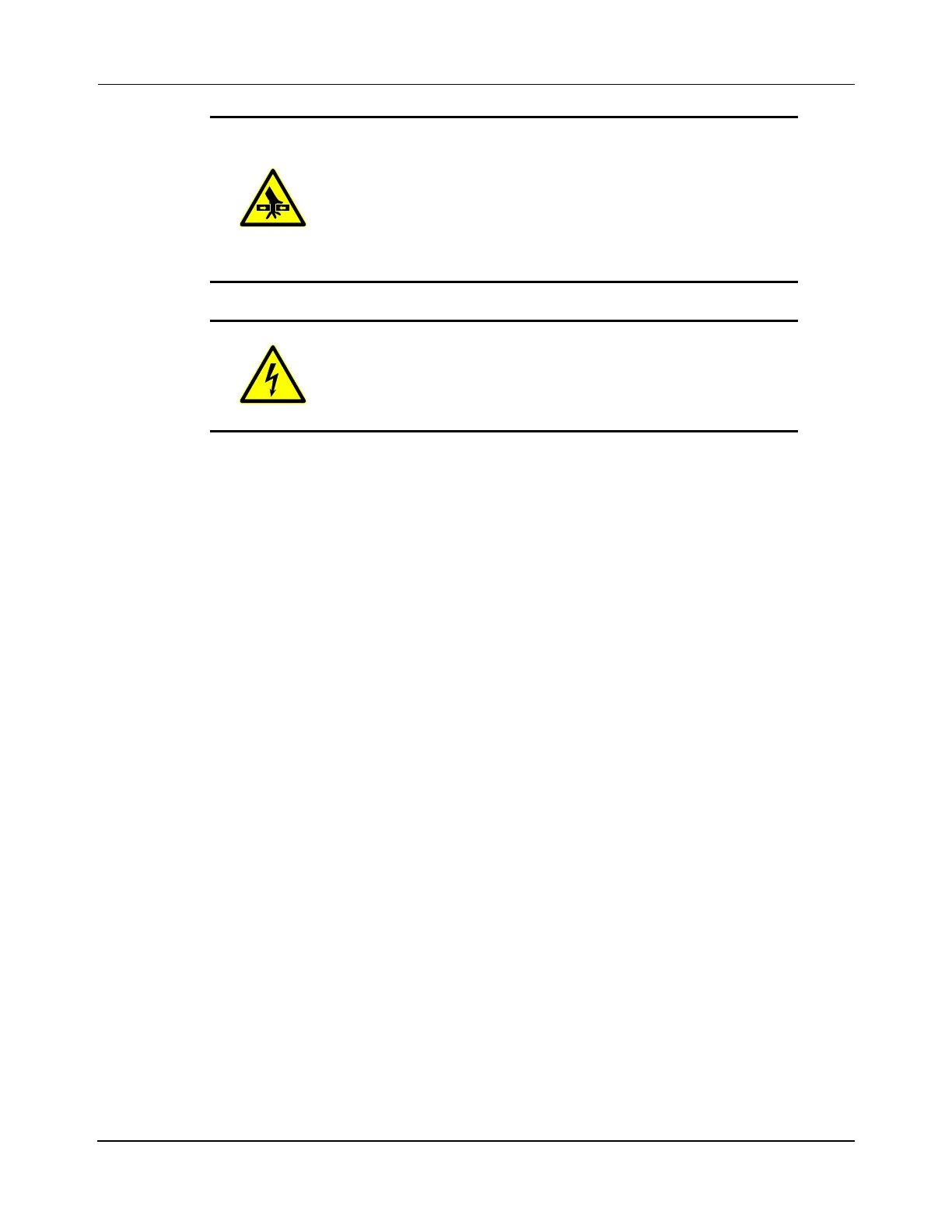Operation
Theory of Operation
324 MagneMotion
Rockwell Automation Publication MMI-UM002F-EN-P - October 2022
If both propulsion power and logic power to the transport system are removed, there is no
tracking of vehicles being provided. Once power is restored the transport system must be
restarted, which detects all vehicles at their current locations.
If propulsion power to the transport system is removed while logic power is maintained and a
vehicle is moved manually on the motor, the transport system tracks its position. If the center
of the magnet array on the vehicle crosses a motor boundary (moves off the end of a motor), it
creates an Unlocated Vehicle Fault. Vehicles that have crossed a motor boundary are said to
have lost their signal (Vehicle Signal = 0) when monitoring the vehicle status through the Host
Communication Protocols (see either the Host Controller TCP/IP Communication Protocol
User Manual, MMI-UM003, or the Host Controller EtherNet/IP Communication Protocol
User Manual, MMI-UM004).
A vehicle that has been manually moved, bumped, or dislodged, and lost its signal, is able to
reacquire its signal when it is manually relocated to within approximately 25 mm of its origi-
nal position as measured from the center of the magnet array in a puck or the mid-point
between arrays in a tandem vehicle. When propulsion power returns, the vehicle is not able to
move unless it has returned to the same section of the motor where it was located when the
power was shut off. In this case, the vehicle is shown as having signal (Vehicle Signal = 1) but
it also shows as Suspect. Typically, vehicles that are identified as Suspect require a restart of
the path where they are located to clear the Suspect bit. In some cases, the vehicle can be com-
manded, but it continues to show as Suspect.
NOTE: The vehicle IDs for all vehicles on a path that is reset are not maintained. That is,
when the path is reset a vehicle can be assigned a vehicle ID that is different from the
ID it had before the path was reset.
If both propulsion power and logic power are maintained and a vehicle is moved manually, the
motor resists motion of the vehicle. Once the vehicle is released, it snaps back to its original
position if it has not been moved vary far (less than 25 mm) unless the center of the magnet
array on the vehicle crossed a motor boundary.
PINCH/CRUSH HAZARD
Moving mechanisms have no obstruction sensors.
Do not attempt to move any vehicles manually while propul-
sion power is supplied to the transport system or personal
injury could result in the squeezing or compression of fingers
or other body parts between moving mechanisms.
SHOCK HAZARD
Moving vehicles by hand produces eddy currents in the sta-
tors of the motors where the vehicle is being moved, which
puts power on the propulsion bus.

